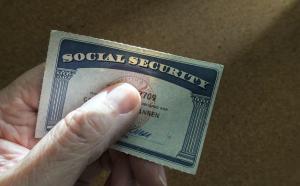How to recover after withdrawing early from your retirement savings
During hard times, people may turn to their long-term savings to help them through a short-term hardship. That’s true for many Americans now weathering the coronavirus pandemic.
More than a quarter (27%) of working or recently unemployed adults with retirement savings have used or plan to use those funds as an immediate income source because of the COVID-19 crisis, according to a new survey from Bankrate.
While the move can bridge a money gap now, it also makes it harder for you to guarantee a comfortable retirement down the road. But there are ways to mitigate the long-term effects of withdrawing early, experts said. It requires a bit of frugality, discipline, and hard work.

Put back in what you took out ASAP
If you’ve withdrawn funds, you should try your best to pay back the amount you withdrew as soon as possible.
As a result of the coronavirus relief package called the CARES Act, you have more time to make your retirement savings whole without tax penalties. If you return the same amount you withdrew within the next three years, you can avoid the tax consequences.
But the downside of withdrawing, even for a coronavirus-related financial hardship, remains that you will have forgone investment gains.
“The biggest risk is that the money comes out and it never goes back in,” said Greg McBride, chief financial analyst at Bankrate.com. “The $5,000 you pull out today could be $30,000, $40,000, or $50,000 by the time you retire.”
Find extra money to contribute
If you can’t find a second job during the coronavirus outbreak, cut back on expenses to free up cash.
“You can’t earn your way out of this, but you can focus on being a conscious spender,” said Ande Frazier, CEO of myWorth, an online finance educational community geared towards helping women.

Even after your financial hardships subside, remain frugal and spend only when necessary. Any extra money can go back to your retirement savings.
“I think this is a really good opportunity to reevaluate what you’re spending money on,” said Frazier. “If you’ve had to cut things out don’t be so quick to add them back in, since it would make better sense to keep saving.”
Increase future contributions
Another strategy for making up the amount you’ve withdrawn is to increase future contributions when you’re employed and on stable financial footing.
“Taking a withdrawal in your early years has a negative compounding effect on your future retirement asset pool,” said Dan and Natalie Slagle, founders of Fyooz Financial Planning. “To overcome this, you may need to increase future retirement plan contributions when cash flow becomes steady again.”
That’s what some savers are doing already. About 1 in 7 millennials are contributing more to their retirement accounts during the crisis than before.
Both founders also recommend stepping on the brakes from major life decisions, such as upgrades to your home or car as well as saving for your children’s education, to get your retirement back on track
“All of those expenses can be leveraged if needed, whereas your retirement account can’t,” they said.
Open another retirement account
If you’ve taken the time to build a side hustle, it may be helpful to create a separate retirement account for that.
“If your current employer doesn’t provide a retirement plan option, creating a side hustle may allow you to establish a solo 401(k), SEP IRA, or SIMPLE IRA,” the Slagle’s said. That can help you to put even more away for retirement, helping you to catch up on any early withdrawals.
Dhara is a writer for Cashay and Yahoo Money. Follow her on Twitter @dsinghx.
Read more information and tips in our Retirement planning section





